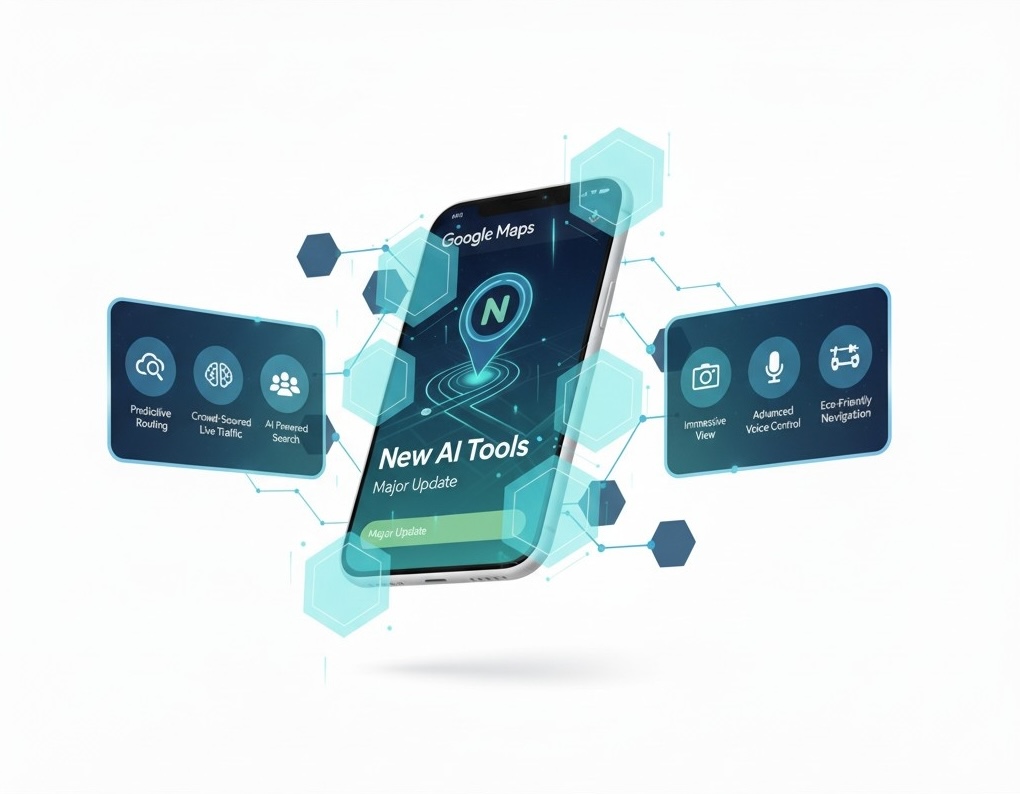Google Maps' AI Overhaul Promises Smarter, More Immersive Journeys

Google Maps, a cornerstone of modern navigation, is set to transform user experience with its latest AI-powered advancements. This significant update promises to make every journey, from daily commutes to ambitious explorations, more intelligent, efficient, and engaging. Users can anticipate a new era of personalized travel planning and real-time guidance, pushing the boundaries of what a mapping application can achieve.
Background / Context
For years, Google Maps has led the charge in digital mapping, evolving from simple turn-by-turn directions to integrating public transport, street views, and business listings. This latest leap aligns with a broader industry trend towards hyper-personalization and predictive analytics, where AI is increasingly leveraged to anticipate user needs and optimize outcomes. The demand for more nuanced, real-time information has pushed location technology providers to invest heavily in machine learning, and Google's new tools are a direct response to this evolving landscape.
Key Developments / Details
The core of Google Maps' update lies in several groundbreaking AI integrations:
Smarter Routing with Predictive AI: The new system will leverage advanced AI algorithms to analyze historical traffic patterns, real-time conditions, and even predicted local events. This allows for significantly more accurate estimated arrival times and proactive rerouting to avoid congestion, even before it materializes. The AI learns and adapts, ensuring dynamic optimization of routes based on a vast array of data points.
Crowd-Sourced Live Traffic and Incident Reporting: Enhanced AI will process crowd-sourced data more effectively, leading to quicker and more precise reporting of incidents like accidents, road closures, or unusual slowdowns. The system intelligently filters noise from genuine disruptions, providing users with highly relevant, up-to-the-minute information crucial for safe and efficient travel.
AI-Powered Search and Discovery: Finding new places is now more intuitive. The AI will understand complex, natural language queries, delivering highly personalized recommendations for restaurants, attractions, and services based on user preferences, past searches, and visited locations. This moves beyond keyword matching to genuine intent understanding.
Immersive View for a Glimpse of Your Destination: This innovative feature offers a photorealistic, multidimensional view of locations. Powered by sophisticated AI, Immersive View allows users to virtually explore neighborhoods, landmarks, and even select venue interiors in a rich, interactive 3D environment, offering unparalleled pre-arrival orientation.
Advanced Voice Control and Natural Language Understanding: Interactions with Google Maps become more seamless. The AI's improved natural language processing means users can engage in conversational commands, ask complex questions, and modify routes hands-free, making navigation safer and more intuitive than ever.
Eco-Friendly Navigation with AI Optimization: Google Maps is expanding its commitment to sustainability. The AI will now not only suggest the fastest routes but also identify and recommend more fuel-efficient options, factoring in variables like road gradient, traffic light density, and typical speeds to minimize carbon footprint.
Implications
These advancements hold significant implications for both individual users and broader society. For users, it means less time stuck in traffic, more confident exploration of new places, and a reduced environmental impact. For the transportation industry, more accurate traffic prediction could lead to better urban planning and resource allocation. Economically, businesses might see increased foot traffic from AI-driven discovery, while the focus on eco-friendly routes contributes to global sustainability goals.
Challenges / Limitations
While the potential is vast, integrating such advanced AI presents challenges. Data privacy remains a concern, particularly with the increased collection and processing of user behavior and location data. The accuracy of AI predictions is also highly dependent on the quality and volume of incoming data, which can vary. Moreover, ensuring equitable access to these advanced features across diverse geographical and socioeconomic landscapes will be crucial.
Future Outlook
The release of these AI tools hints at a future where our digital maps are not just guides but intelligent companions, anticipating our needs and proactively assisting us. We can expect further integration with other smart technologies, perhaps even real-time adaptive public transport suggestions based on personal schedules or augmented reality overlays for even more immersive exploration. The continuous refinement of AI models will undoubtedly lead to even more nuanced and personalized mapping experiences.
Conclusion / Summary
Google Maps' latest AI-driven upgrades are poised to redefine how we navigate and interact with the world around us. From predictive routing to immersive exploration and eco-conscious travel, these tools mark a significant evolution in location technology. This development underscores the ongoing shift towards smarter, more personalized digital experiences, promising a future of travel that is both more efficient and more enjoyable.